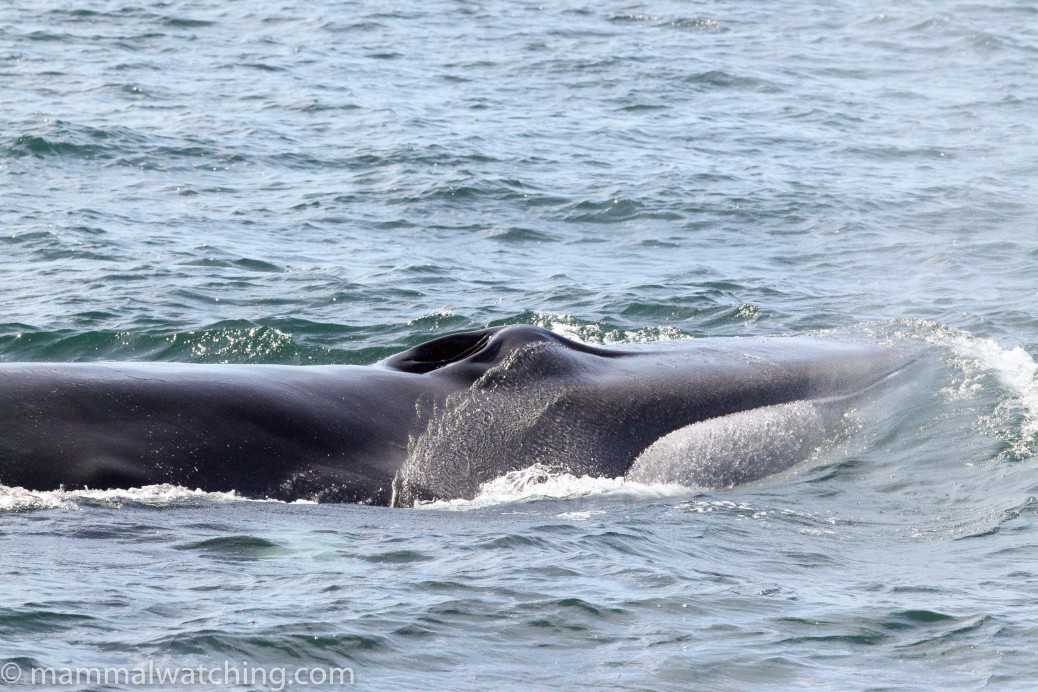
Massachusetts
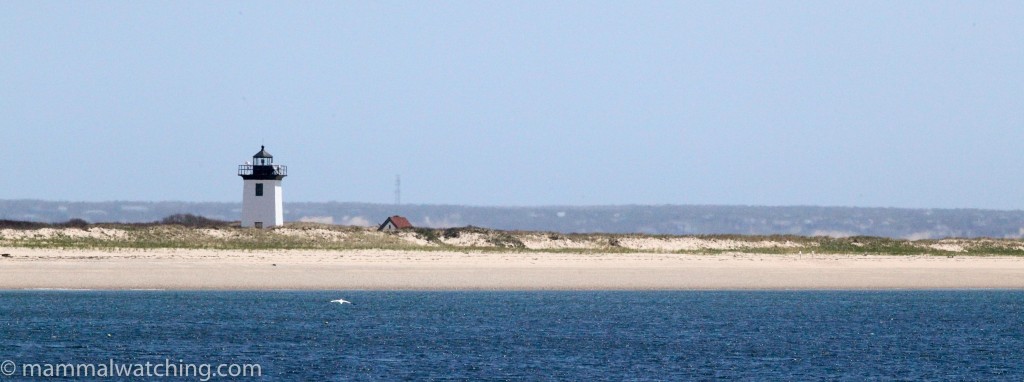
Cape Cod
Cape Ann
By late April 2013 the New York spring was finally in the air. I’d had a slow start to the year’s mammal watching, so I headed up to New England to look for New England Cottontails and White-sided Dolphins over the first weekend of May.
After some heavy Googling I contacted Cape Ann Whale Watch. Now I had written to whale watching outfits in the US before about looking for certain species. Their responses had generally fallen into two categories: either a) no response or, almost as helpful, b) “we see them sometimes but it is not guaranteed …these are wild animals”.
This time was different. Cynde McInnis, the naturalist at Cape Ann, got back to me straight away, explaining that they typically see more White-sided Dolphins at the beginning and end of each season. She wrote a few days later to say they’d just had a pod of 50 off the boat so I booked a trip up the following week (they only run one trip a week at the very start of the season).
The 13.30 trip out of Gloucester, MA was looking a bit dodgy at one stage because of a 2m swell. Thankfully it went ahead. The passengers started dropping like flies five minutes out and a Minke was the only distraction from the puking tourists on the way out. About an hour out we ran into masses of copepods: patches of the sea were red with these tiny crustacans and it looked like there’d been a shark attack.
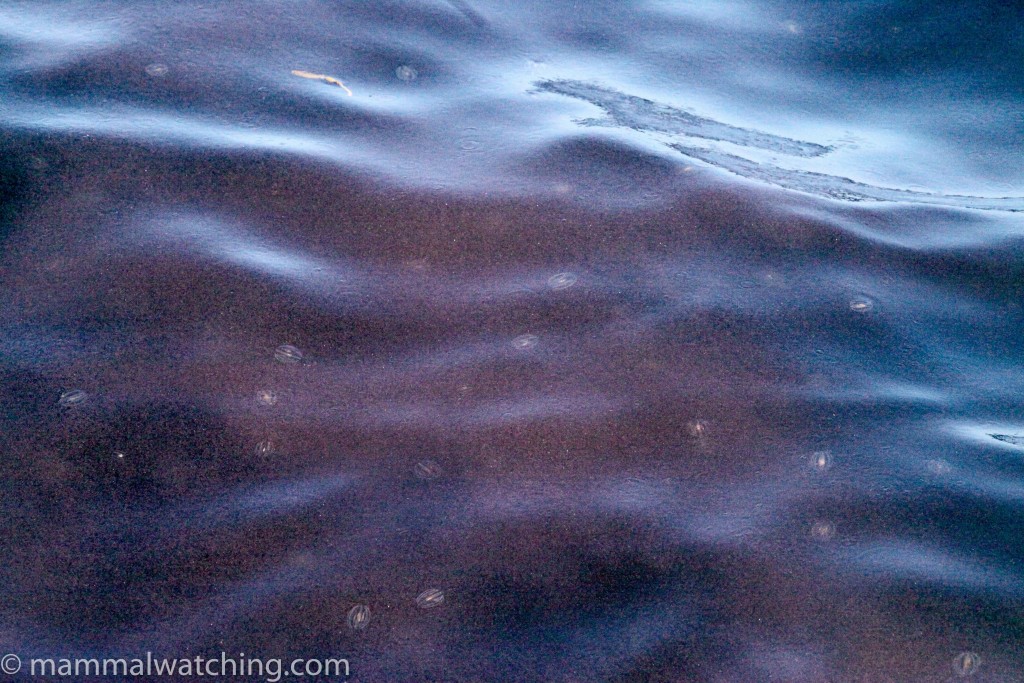
Copepods
Where there is whale food there are whales: several North Atlantic Right Whales were making the most of it. And they were skim feeding, something Cynde had not seen before in 2000 trips. I got a great look at these animals’ massive heads.
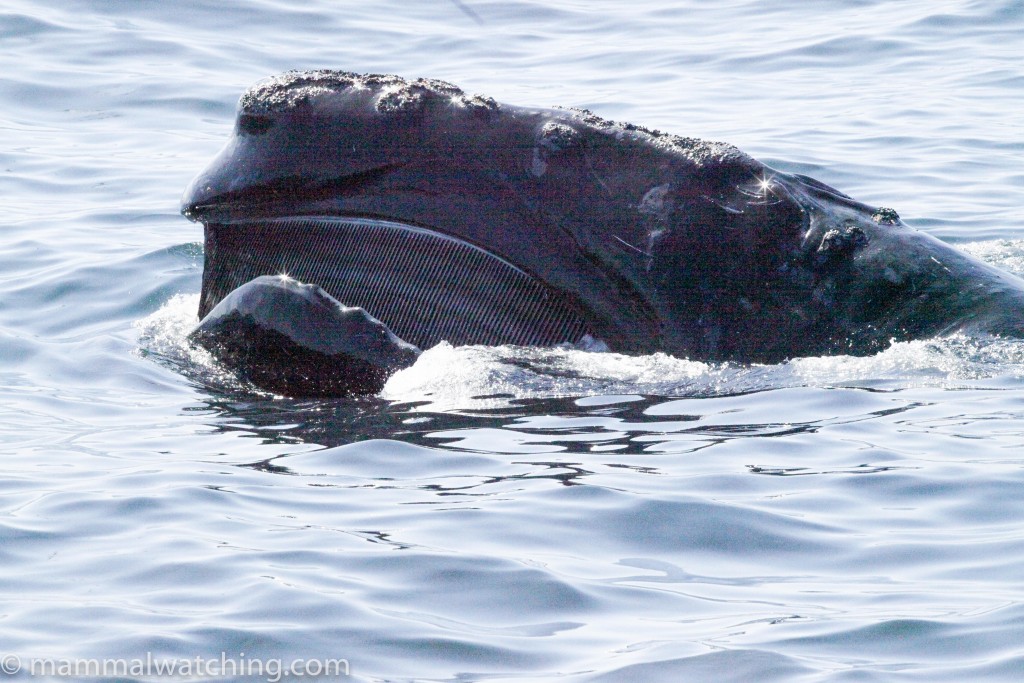
Northern Right Whale, Eubalaena glacialis, skim feeding
Cynde’s voice came over the tannoy. “We’ve another whale over there. Looks like a Sei Whale”. Holy shit! This is a species I’d been looking for 18 years and I had resigned myself to having to go to the Falkland Islannds before I would see one. We saw several, again skim feeding, and got great views.
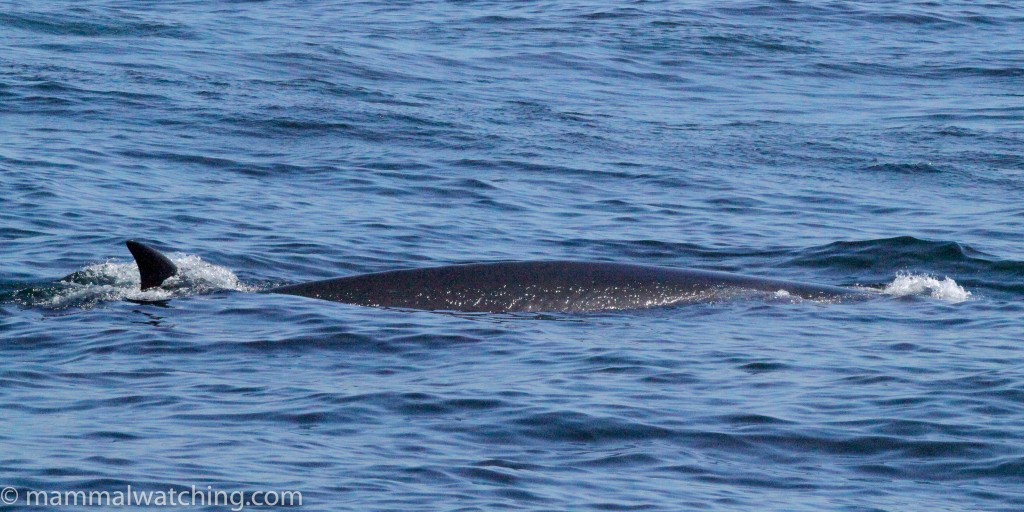
Sei Whale, Balaenoptera borealis
None of the other passengers seemed appreciated how lucky they had been. But when I chatted afterwards to Cynde she said it had been one of the best trips she’d ever taken. Cynde’s been on about 2000 trips over 20 years and has seen Seis just 10 – 15 times, and seen them skim feeding only once. Northern Right Whales, while regular during the start of the season until mid May – when they head up to the Bay of Fundy – are more common. But she’d never seen them skim feeding. The Dolphins could wait for another day! The operation there is a good one, and Cynde was a real expert. I’d cannot remember having such a good guide on a whale watching trip before.
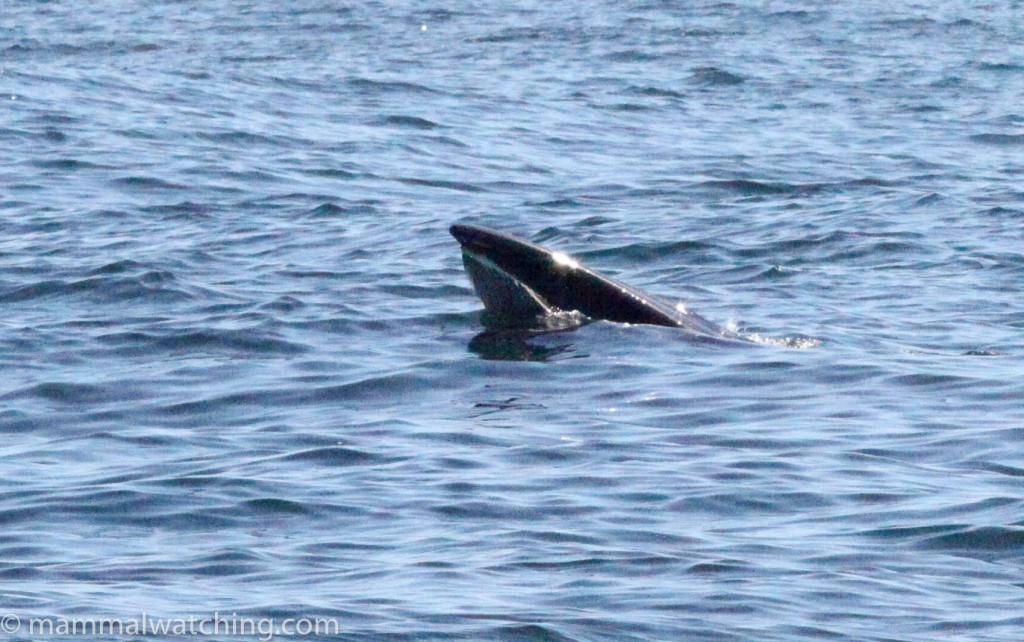
Sei Whale, Balaenoptera borealis, skim feeding
Cape Cod
From Cape Ann it took a couple of hours to drive down to Falmouth, Cape Cod. I was heading to the Mashpee Pine Barrens near the Town of Mashpee, which Matt Miller had told me was a site for New England Cottontails.
I quote from their website “PB also exists as part of the Mashpee New England Cottontail Focus Area … The Mashpee Pine Barrens (MPB) is a collection of properties owned by MDFW, the Town of Mashpee, Mashpee Wampanoag Tribal Nation, and The Nature Conservancy encompassing over 400 acres of pitch pine/scrub oak barrens, oak forest, and Atlantic white cedar swamp habitats. MPB occurs west of Great Neck Road, East of U.S. Route 28, and north of Red Brook Road; Great Hay Road, an unimproved dirt road, bisects MPB.”
Matt had heard that Eastern Cottontails are not present in that area, so any rabbit I saw should be one of the New England flavor (NB I am now – as of 2019 – unsure whether this is still true). The dirt road through the barrens reserve looked good, but I wasn’t going to get through the sand in my saloon car so I cruised around some of the housing developments that abutted onto the Barrens. Large houses with large lawns were set into patches of the forest. Roads like Degrass Road and Surf Drive (that run north off of Red Brook Road) were both productive.
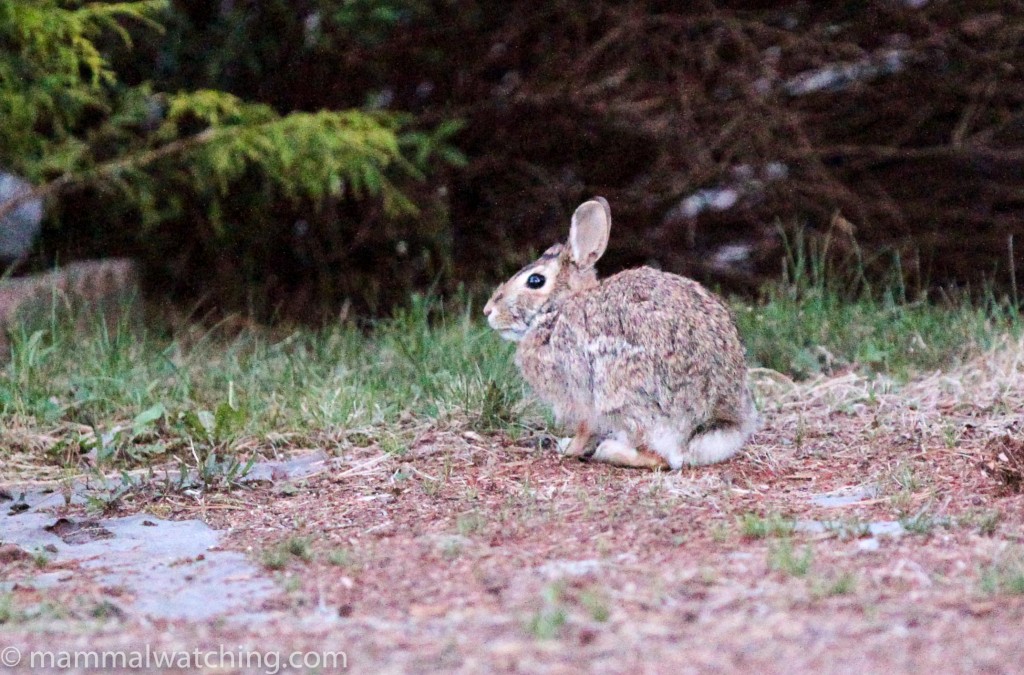
New England Cottontail, Sylvilagus transitionalis
I got there at dusk and quickly saw a cottontail jump into a thicket from the roadside, followed shortly after by a couple of more rabbits on the edges of people’s lawns. I couldn’t find any more during a spotlight drive after dinner, though I did see a Virginia Opposum looking a lot neater and sweeter than they usually do.
At dawn the next day I got prolonged views of an animal and pictures too. It shared all the New England Cottontail diagnostics (no white spot on the forehead, a dark spot between the ears and black leading edges to the ears) so I was satisfied.
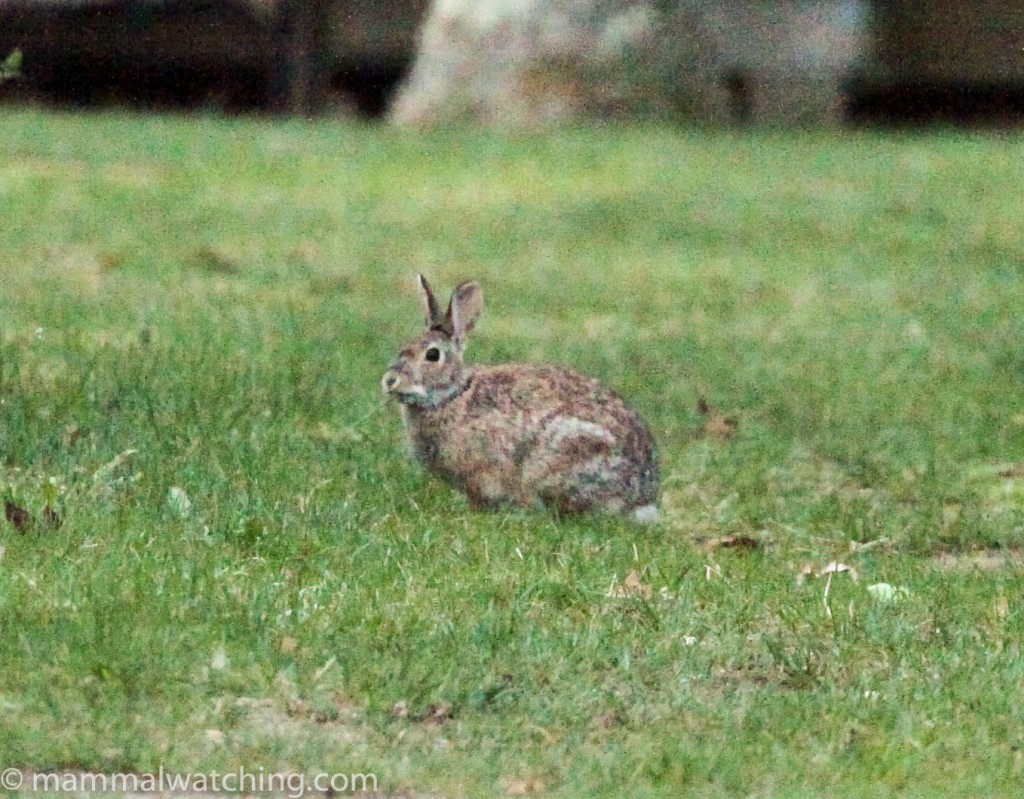
New England Cottontail, Sylvilagus transitionalis
I set 40 Sherman traps around the forest surrounding Great Neck Cemetery a mile north on Great Neck Road but caught only one animal – a very red White-footed Deer Mouse (Peromyscus leucopus). North American Deer Mice (P. maniculatus) are apparently absent from Cape Cod. I tried to turn it into a Meadow Jumping Mouse but couldn’t quite convince myself (and didn’t have a hope of convincing Fiona Reid when she saw the picture!).
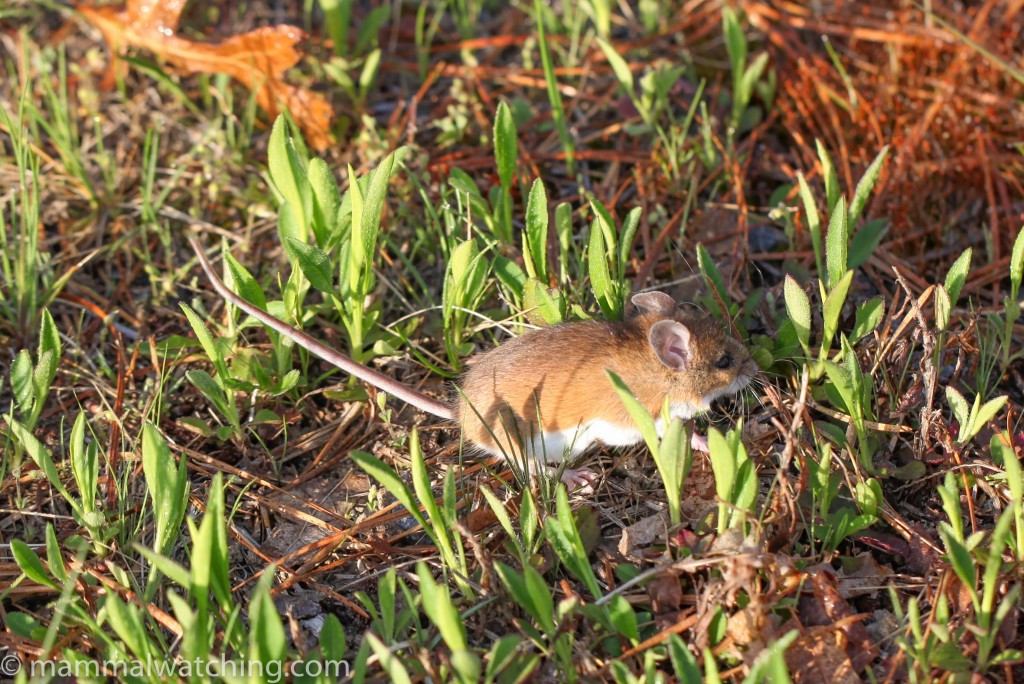
White-footed Deer Mouse, Peromyscus leucopus
From there it was another 2 hours to the tip of Cape Cod for a whale watch trip out of Provincetown, still in the hope of bumping into some White Sided Dolphins. The ship’s naturalist reckoned he saw more White sided Dolphins in the summer months, but on average just one trip in every 10.
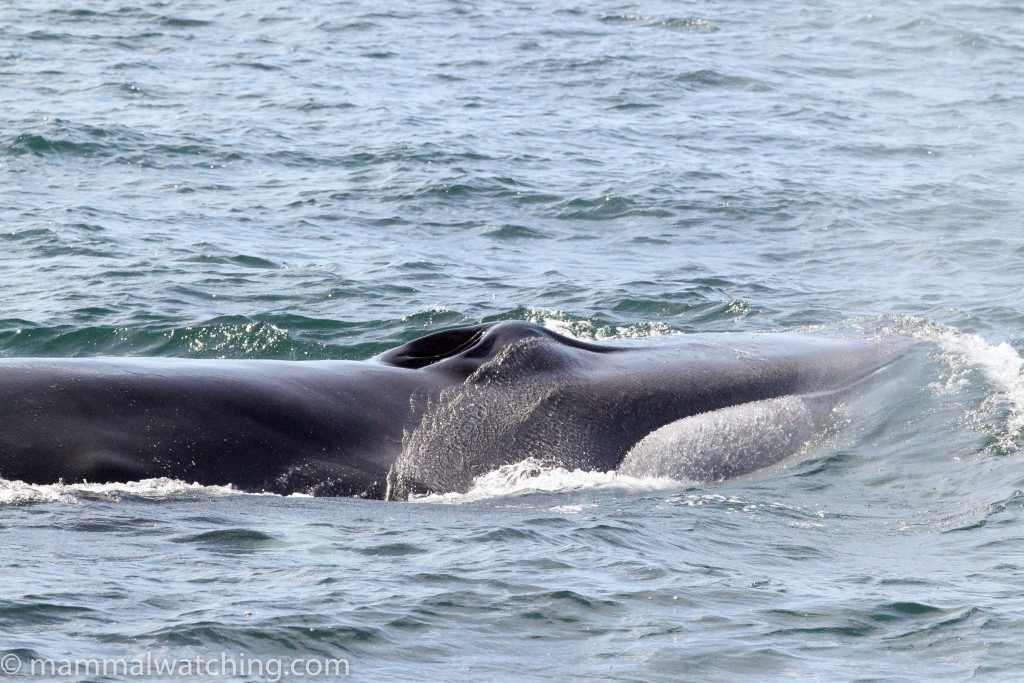
Fin Whale, Balaenoptera physalus
And on this trip we didn’t see any dolphins, nor did we see the Sei Whales that they had had off of the boat a couple of days earlier. We did see a Humpback, a Minke briefly, a couple of Harbour Porpoises, which I missed, and both Grey and Harbour Seals. The highlights were definitely the stellar views of several Fin Whales that swam slowly right along side the boat for several minutes.
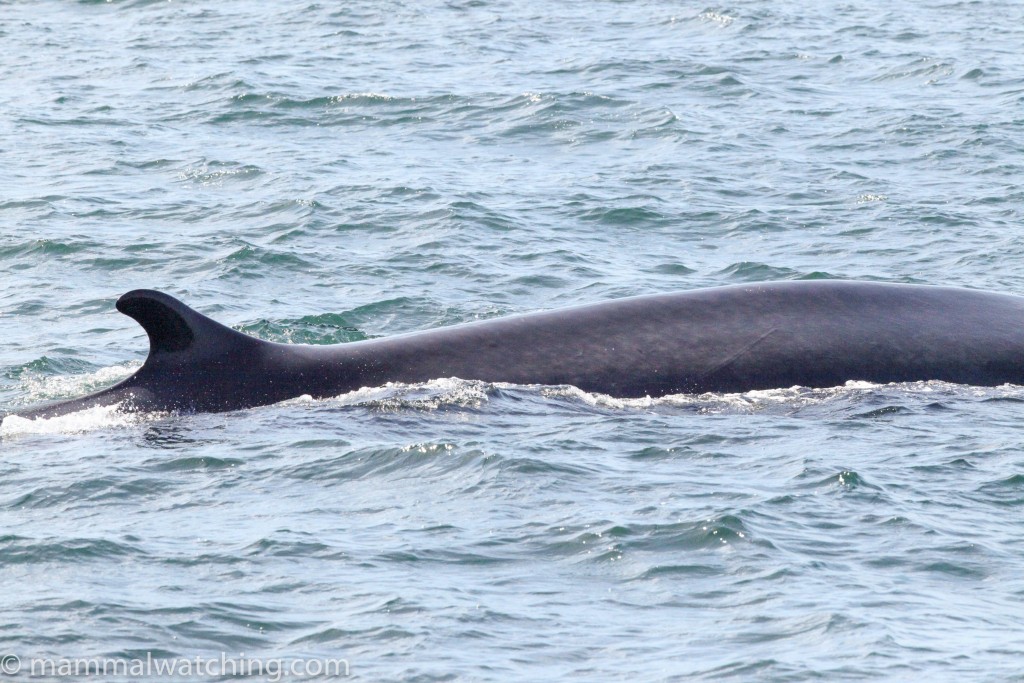
Fin Whale, Balaenoptera physalus
From the top deck I had an aerial view of the whole animal just below the water.
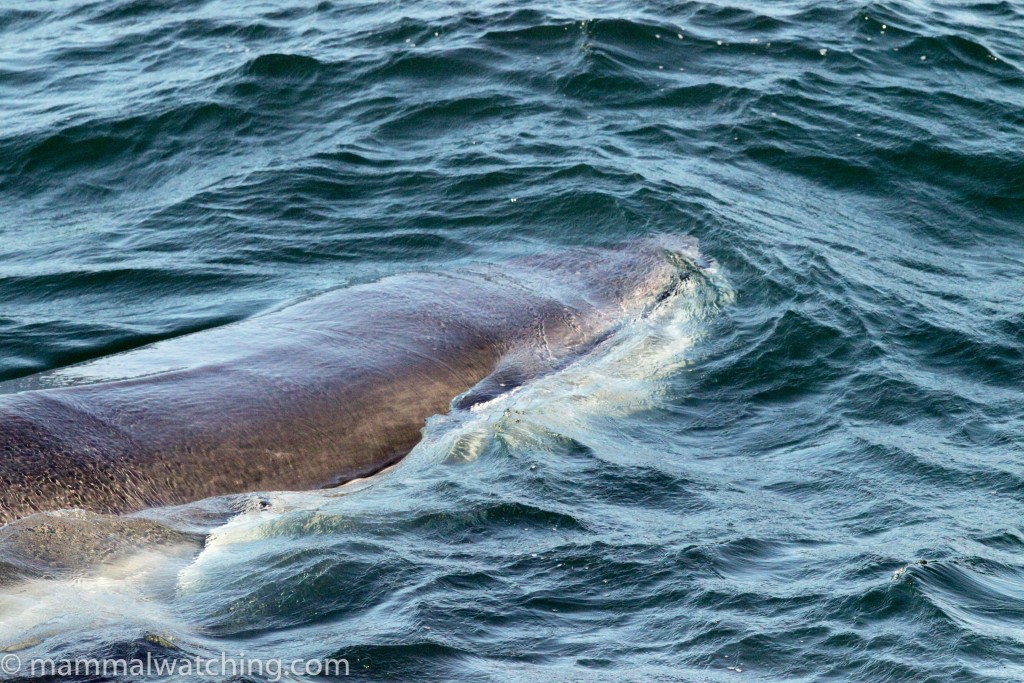
Fin Whale, Balaenoptera physalus
So a another good trip and a pretty diverse patch of water to have produced five whale species, and harbor porpoises, in 24 hours.
I returned two months later with my kids, had less good views of a Fin, a Humpback and a Minke Whale that morning. White-sided Dolphins had been seen several times that week but not during our trip. Other wildlife that weekend included a squashed Long-tailed Weasel, near Brewster, and several Cottontails (presumably Eastern) around the Shady Knoll campsite at Brewster, together with some Eastern Chipmunks.
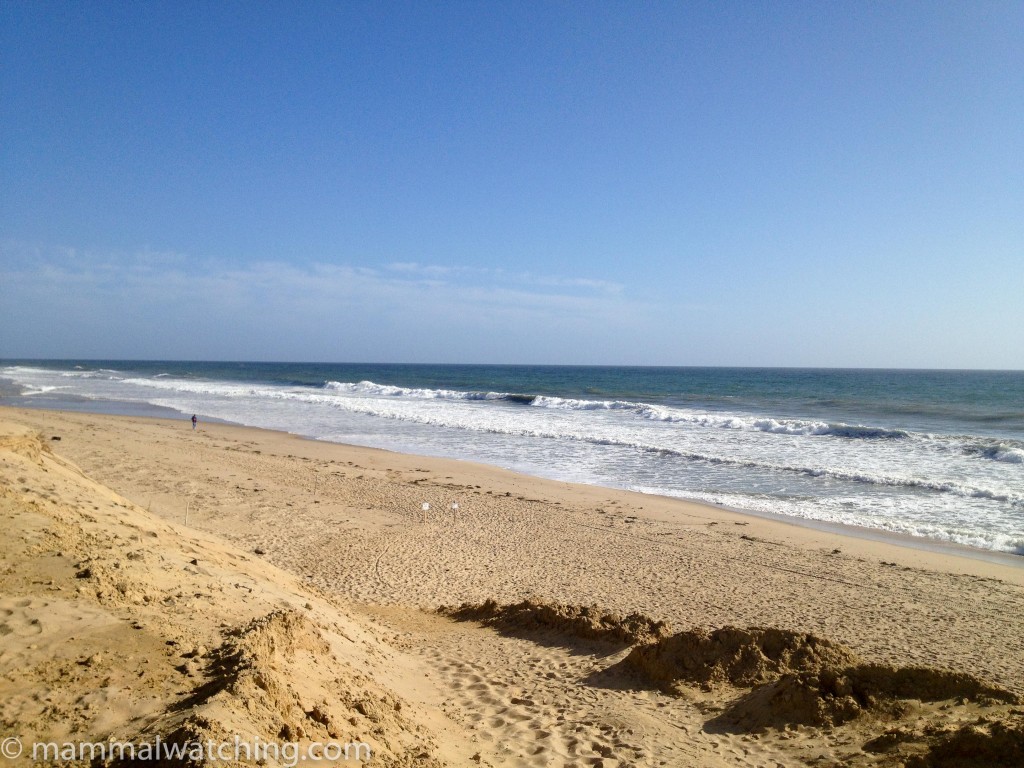
Cape Cod National Seashore
Community Reports
Red Wolf (North Carolina) and New England Cottontail (Cape Cod), 2022: Aidan Place’s report of seeing both species this year.
Colorado and New England, 2019: Samuel Marlin, a few days & 28 species including New England Cottontail, Moose and Bighorn Sheep.
New England, 2017: Venkat Sankar’s notes from a few short trips, with species including Porcupine, Mink, Southern Flying Squirrels and Meadow Jumping Mice.
USA, 2016: Samuel Marlin, several trips & 25 species including Moose and Southern Bog Lemming in New England, and Kit and Island Foxes in California
How to see a Beach Vole, 2013: Vladimir Dinets’ action packed guide to seeing Beach Voles on Muskeget Island.
Also See
Mystery mustelid (it’s a mink!), January 2022
Moose, Bobcat, Bear and Porcupines in MA, June 2021
New England Cottontail ID on Cape Cod. RFI. September, 2019
North Atlantic Right Whale Bonanza and Sei Whales too, April 2018
RFI Moose and Fisher in New England, September, 2015
Fisher on the beach, 2014: Monomoy NWR, Cape Cod


Leave a Reply
You must be logged in to post a comment.